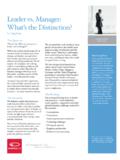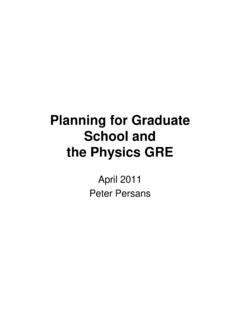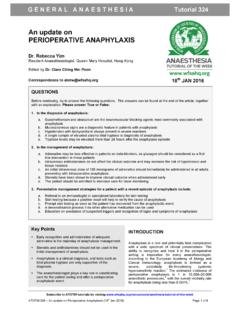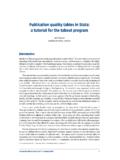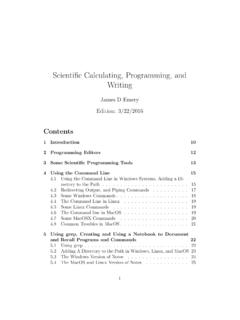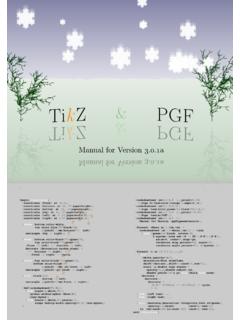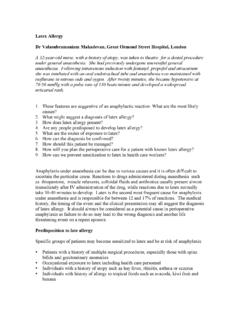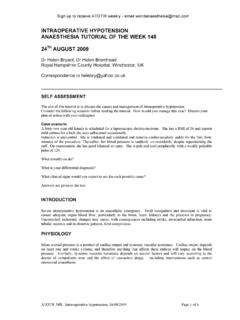Transcription of Text Formatting with LTEX - Rensselaer …
1 Text Formatting with LATEXA TutorialAcademic and Research Computing, April 2007 Table of Contents1. latex What is TEX?.. What is latex ?.. How latex Works.. The latex Input File.. latex Commands.. Text.. Characters.. of the Input File.. Some latex Vocabulary..52. Creating A latex Document Classes.. Class Options.. Packages.. Making a Title Page.. Making a Table of Contents.. Behind the Scenes.. Files.. a Page is Built.. Example: Report Class.. Example: Letter Class..123. Document Line Spacing.. Paragraphs.. Text Justification.. Margins.. Headers, Footers, and Page Numbering..15ii Contents4. Within the Section Headings.. Changing Type Style and Size.. Starting New Lines and New Pages.. Leaving Horizontal and Vertical Space.. Drawing Rules.
2 Footnotes.. Centering.. Quotations.. Reproducing Text As-Is.. Lists.. Cross References..225. Tabular Tabbing.. Tabular.. Simple Ruled Table.. Paragraph Columns, Spanning Columns.. on the Decimal Point.. Leading or Trailing Space..276. In-line Math.. Display Math (for unnumbered equations).. Equation Environment (for numbered equations).. Eqnarray Environment (for multiline equations).. Array Environment (for matrices, etc.).. Building Mathematical Expressions.. and Subscripts.. in Math Mode.. , Braces, and Bars.. , Integrals, and Summations.. Delimiters..347. Including Creating the Graphics File.. Importing the Graphic into your latex Document.. Viewing the Output..368. Placing Figures & Tables (Floats) Making a Caption.. Examples.. Overcoming Problems with Float Placement.
3 Landscape Figures and Tables..40 April 2007 Contents iii9. Preparing a Using latex s built-in Method.. Using BibTEX.. BibTEX.. Styles.. More Information.. Managing a Large Document.. Generating an Index.. Including hyperlinks.. Accents and Special Characters..49 Appendix A: Mathematical Symbols50 Appendix B: Error Messages53 Resources55 General Information on latex ..55 latex packages..55 latex Thesis..55 Mathematical Expressions..56 Symbols..56 Graphics..56 BibTEX..57 Installing latex ..57 Academic and Research Computing, RPIText Formatting with LATEXThis document describes the latex language. For specifics of how to runit on various platforms ( , Windows orunix), see the latex Informationpage ( ), and follow thelinks for the on-line tutorials. The above web page also contains informationon preparing a thesis or a resume, as well as many examples and links toother helpful 1.
4 latex What is TEX? TEX is the typesetting language upon which latex is built. It was designed andwritten by Donald Knuth especially for math and science. TEX is pronounced Tech, similar to Bach. TEX is portable. It is available for most computers and is used all over the documents can be moved easily from one system to another, as long as therequired fonts are on both systems. TEX comes with its own set of fonts, called Computer Modern, used by fonts exist in a variety of styles, including serif, sans serif, typewriter (fixedpitch), and an extensive set of mathematical symbols. It s also possible to useother font families, such as Times, Palatino, etc. TEX is also a programming language, making it possible to create commands thatsimplify its What is latex ? latex is a TEX macro package, originally written by Leslie Lamport, that simplifiesthe use of TEX.
5 All the above features of TEX, including portability, also apply toLATEX. latex is pronounced either Lay-tech or Lah-tech. Most latex commands are high-level (such aschapterandsection) and specifythe logical structure of a document. The author rarely needs to be concerned withthe details of document layout, concentrating instead on the content. Most plainTEX commands also work with latex . Thedocument classdetermines how the document will be formatted. latex pro-vides several standard document classes from which to choose. latex is flexible, gives you complete control, handles big, complex documents withease, and never crashes or corrupts your Chapter 1. latex How latex WorksTo use latex , you first create a plain ASCII text file with any text editor. In this fileyou type both the text of your document and the latex commands to format it.
6 Youthen typeset your document, usually by clicking a button on a toolbar or selecting amenu item. Nowadays there are two routes for processing a latex document: The traditional way is to run thelatexprogram, which creates a DVI (DeviceIndependent) file. This file is in binary format and not viewed directly. Youthen run a previewing program for viewing on screen and/or thedvipsprogramto create a PostScript file for viewing or for printing via the ghostview/GSViewprogram. GSView can also convert the document to PDF format. Alternatively you can run the relatively recentpdflatexprogram to create a PDFfile for viewing or printing, usually with Adobe s Acrobat second method is more direct for PDF output, but the first is quicker and moreconvenient for The latex Input FileLATEX input files have names that end with the : for example, an accept-able file name might (Never use spaces in file names.)
7 The input filecontains both the text of your document and the latex commands needed to format first command in the file,\documentclass, defines the style of the Entering latex CommandsTo distinguish them from text, all latex commands (also calledcontrol sequences) startwith a backslash \ . A command name consists of letters only and is ended by a spaceor a non letter (such as a comma, period, brace, etc). If it ends with a space, the spaceis consumed by latex and does not appear in the output. An example is\today,which prints the current date. To avoid having the space after the command disappear,do the following:\today\ is a good :April 16, 2007 is a good are also commands that consist of the backslash followed by exactly one non-letter. They are most often used to put a special symbol in the text.
8 For example\$prints a $ (which cannot be entered directly because latex uses it to begin math mode).Spaces after these control symbols are not commands are case-sensitive. Most are all lowercase. A few commands use thefirst letter in uppercase such as\Delta . Fewer still use all The latex Input File 3 Some commands take an argument, placed within curly braces{}after the commandname. For example,\textbf{this text is bold}prints the text inside the braces inboldface type:this text is boldLATEX usesgroupingto limit the effect of certain commands. Braces{..}are used tobegin and end groups. (Anenvironmentis also a group; see page5.) For example, the\largecommand is usually used inside a group:{\large this is bigger than normal}produces:this is bigger than normalA command such as\largeis called a declaration because, unless it is given withina group, its effect will continue until another declaration (in this case\normalsize)counteracts it.
9 Note the difference between a declaration used inside a group and acommand like\textbf{..}, which will not work unless an argument is provided insidea pair of bracesfollowingthe command symbol%can be used to put a comment in your input file. When latex sees a%, itignores the rest of the you use commands that specify a length, such as a command to set the size of amargin or a command to leave a certain amount of space, you will need to specify theunits of measurement. latex recognizes the following units:cmcentimeterptprinter s point, 72 per inchmmmillimeteremfont-dependent width of m ininchexfont-dependent height of x Entering TextIn the input file, words are separated by leaving one or more blank spaces. Paragraphsare separated by leaving one or more blank lines. (You can also use the command\parto indicate a new paragraph.)
10 latex ignores multiple blank spaces and multiple blanklines in input single quotation marks by using the left ( ) and right ( ) single quote marks onyour keyboard. Type left double quotation marks by using using two single left quotes( ), and type right double quotation marks by using either two single right quotes ( )or the double quote key (").There are three kinds of dashes in typeset documents: the hyphen (for compound words),the endash (for such things as page number ranges), and the emdash (used as a punc-tuation mark in English prose). Since there is only one dash on the keyboard, type-,--, and---to get -, , and .To prevent two words from being split at a line break, tie them together with the tildecharacter: for exampleMr.~Smithwill never appear with Mr. at the end of one lineand Smith at the start of the that some characters have special meaning to latex and must be entered in aspecial way, as described in the next and Research Computing, RPI4 Chapter 1.
